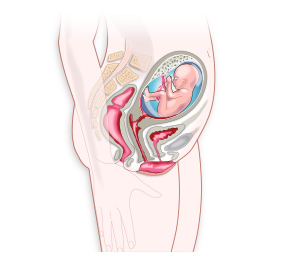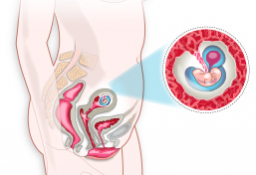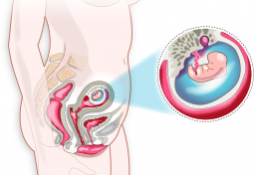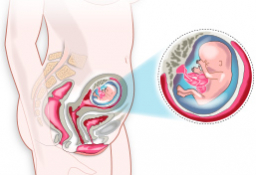Changes in the fifth month of pregnancy
Varicose veins, stretch marks and swelling of the hands and feet may occur
In the fifth month of pregnancy, and as the pregnancy progresses, new symptoms such as fluid retention appear. This month is characterised by two fundamental events. One is the ultrasound scan in the 20th week, when the baby is carefully analysed and its sex is revealed. But the most exciting thing is that the mother notices her baby's kicks for the first time
Changes in the mother
The discomfort and symptoms typical of early pregnancy ease off. There is an increase in vaginal discharge that is white or yellowish and thicker than normal, called leukorrhea. In the same area, there is an increase in blood flow making the labia majora and minora of the vagina darker in colour.
Physical changes
- The ankles and wrists can swell, usually at the end of the day and if you spend a lot of time standing. This is due to the compression of the veins by the uterus that hinders venous return, together with the hormonal changes. This causes varicose veins to appear.
- The uterus grows to the height of the belly button. From week 20 onwards, it will grow by about 1 cm each day. As it grows, the mother’s skin pulls and stretch marks may appear.
- During this month it is already normal to notice foetal movements, which will be more evident at night while lying down.
- At the end of these weeks, the average weight gain is about 5 or 6 kg.
What is gestational diabetes?
Find out how it is diagnosed and what the glucose test consists of.
Week 20 Ultrasound scan
This is the most important ultrasound scan of the pregnancy, as you will discover the baby’s sex with just a small margin of error.
Changes in the baby in the fifth month of pregnancy
- At the end of this month, the foetus weighs about 350 g and is about 25 cm long.
- Its skin develops into two layers, the dermis and the epidermis. Under the skin, oil begins to appear and the epithelial glands produce whitish, pasty secretions, called vernix caseosa, with the function of protecting the skin from the aggression of the amniotic fluid. However, the foetus will swallow amniotic fluid so that its digestive system will mature and grow.
- The nervous system, and especially the brain, continues to grow and develop. During this stage, the foetus develops a strong sense of touch.
- Marks and lines appear on the palms of the hands and soles of the feet. These are genetically defined and unique to each person.










